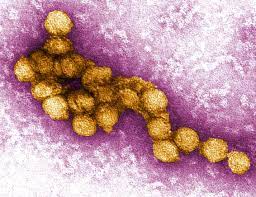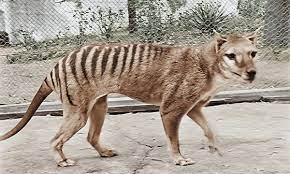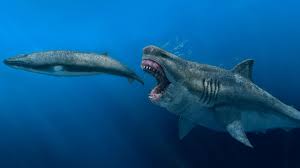Today Current Affairs: 20th August 2022 for UPSC IAS exams, State PSC exams, SSC CGL, State SSC, RRB, Railways, Banking Exam & IBPS, etc
Table of Contents
Draft Indian Ports Bill, 2022:

The Government of India has prepared the draft Indian Ports Bill, 2022 to consolidate and amend the laws relating to ports.
- The draft bill seeks to repeal and replace the existing the Indian Ports Act, 1908.
- Ministry of Ports, Shipping and Waterways has issued Draft Indian Ports Bill, 2022 for Stakeholder Consultation.
- The proposed bill will homogenize and streamline the development of the maritime sector, along with, promoting ease of doing business by eliminating unnecessary delays, disagreements and defining responsibilities.
- It will incorporate State Maritime Boards in the national framework.
- India has a 7,500 kilometre long coastline, 14,500 kilometer of potentially navigable waterways and strategic location on key international maritime trade routes.
- About 95 per cent of India’s trade by volume and 65 per cent by value is done through maritime transport facilitated by ports.
Har Ghar Jal Utsav:

Prime Minister Narendra Modi will virtually address the Har Ghar Jal Utsav on August 19, 2022 which is being held in Goa under the Jal Jeevan Mission.
- Goa is the first State to achieve 100 per cent Har Ghar Jal certification.
- Goa has become the first Har Ghar Jal certified State and Dadra and Nagar Haveli and Daman and Diu are the first Union Territory in the country.
- In this state and UT, people from all the villages have declared their village as Har Ghar Jal through a resolution passed by the Gram Sabha.
- All two lakh 63 thousand rural households of Goa and over 85 thousand of Dadra and Nagar Haveli and Daman and Diu have access to safe drinking water through tap connection.
Pandemic Treaty:

WHO had established an intergovernmental negotiating body to draft and negotiate a Pandemic treaty. WHO says it will be ready in the next 18 months and help prevent future global health disasters.
About Pandemic Treaty:
- In December 2021, the Health Assembly adopted a decision titled “The World Together” at its second special session since it was founded in 1948.
- Under the decision, the health organisation established an intergovernmental negotiating body (INB) to draft and negotiate the contents of the pandemic treaty in compliance with Article 19 of the WHO Constitution.
- The pandemic treaty is expected to cover aspects like data sharing and genome sequencing of emerging viruses and equitable distribution of vaccines and drugs and related research throughout the world.
West Nile virus:

The New York City Health Department announced that the West Nile virus had been detected in two people, one in Brooklyn and another in Queens, as well as in a “record number” of infected mosquitoes throughout the city.
- West Nile Virus (WNV) can cause neurological disease and death in people. WNV is commonly found in Africa, Europe, the Middle East, North America and West Asia.
- WNV is maintained in nature in a cycle involving transmission between birds and mosquitoes. Humans, horses and other mammals can be infected.
- West Nile Virus (WNV) is a member of the flavivirus genus and belongs to the Japanese encephalitis antigenic complex of the family Flaviviridae.
Tasmanian Tiger:

Scientists in the US and Australia have embarked on a $15-million project to resurrect the thylacine or Tasmanian Tiger, a marsupial that went extinct in the 1930s, using gene-editing technology.
- Tasmanian Tiger (Thylacinus cynocephalus), the only animal in the Thylacinidae family to survive in modern times, was a marsupial mammal that raises young ones in a pouch.
- They were slow-paced carnivorous that usually hunted alone or in pairs at night.
- The sharply clawed animal had a dog-like head and ate kangaroos, other marsupials, small rodents, and birds.
- The animal was at the top of the food chain, and hence played a significant role in balancing the ecosystem of its habitat by removing the weak animals and maintaining species diversity.
- As the thylacine was the only apex predator in its ecosystem, its absence impacted the Tasmanian Devil, which was almost wiped out by a facial tumour disease.
First Completely “Functionally Literate”District In India:

Tribal-dominated Mandla district of Madhya Pradesh has become the first completely “functionally literate” district in India.
- Functional illiteracy comprises reading and writing skills that are required to manage daily living and employment tasks.
- Such tasks require reading skills beyond the basic level.
- It is the opposite of illiteracy, which is defined as the inability to read or write in any language.
- To make people functionally literate, a major campaign was launched on Independence Day 2020, in association with the school education department, Anganwadi & social workers, women and child development department, to educate women and senior citizens.
Megalodon:

Using fossil evidence to create a three-dimensional model, researchers have found new evidence about the life of one of the biggest predatory animals of all time — the Megalodon.
- Megalodons roamed the oceans an estimated 23 million to 2.6 million years ago.
- Megalodon could “completely ingest, and in as few as five bites,” a prey as big as the killer whale.
- According to the study, the Megalodon was bigger than a school bus at around 50 feet from nose to tail. In comparison, the great white sharks of the present can grow to a maximum length of around 15 feet.
- Using their digital model, the researchers have suggested that the giant transoceanic predator would have weighed around 70 tonnes — or as much as 10 elephants.




